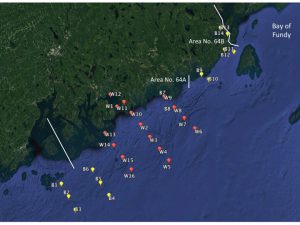For the first time in New England’s coastal waters, shellfish have exceeded the regulatory limit for domoic acid – a potent neurotoxin produced by the diatom Pseudo-nitzschia. Domoic acid accumulates in shellfish that feed on Pseudo-nitzschia, and can lead to amnesic shellfish poisoning in people who consume tainted shellfish.

The NCCOS Harmful Algal Bloom Event Response Program awarded funds to the Woods Hole Oceanographic Institution and the Bigelow Laboratory for Ocean Sciences to rapidly map the spatial extent, species composition, and toxicity of thePseudo-nitzschiabloom in the coastal and nearshore waters of the Gulf of Maine, and to determine the oceanographic conditions contributing to the bloom’s toxicity and distribution. Maine state managers are using these data to inform shellfish harvest closures and mitigate the impact of the unfolding bloom.
Blooms ofPseudo-nitzschiahave also been observed in Massachusetts and Rhode Island. Weekly coordination calls between state agencies, researchers, and NOAA are also helping Massachusetts and Rhode Island respond to this ongoing regional bloom.
Earlier NCCOS and partner harmful algal bloom research in the region has documented the presence ofPseudo-nitzschiaspeciescapable of producing toxins and alerted shellfish managers to this potential threat. Those efforts focused on providing agencies with better detection technology and monitoring methods and have provided some capacity that has aided the rapid response to the current bloom.
For more information, contact Quay.Dortch@noaa.gov or Marc.Suddleson@noaa.gov.
